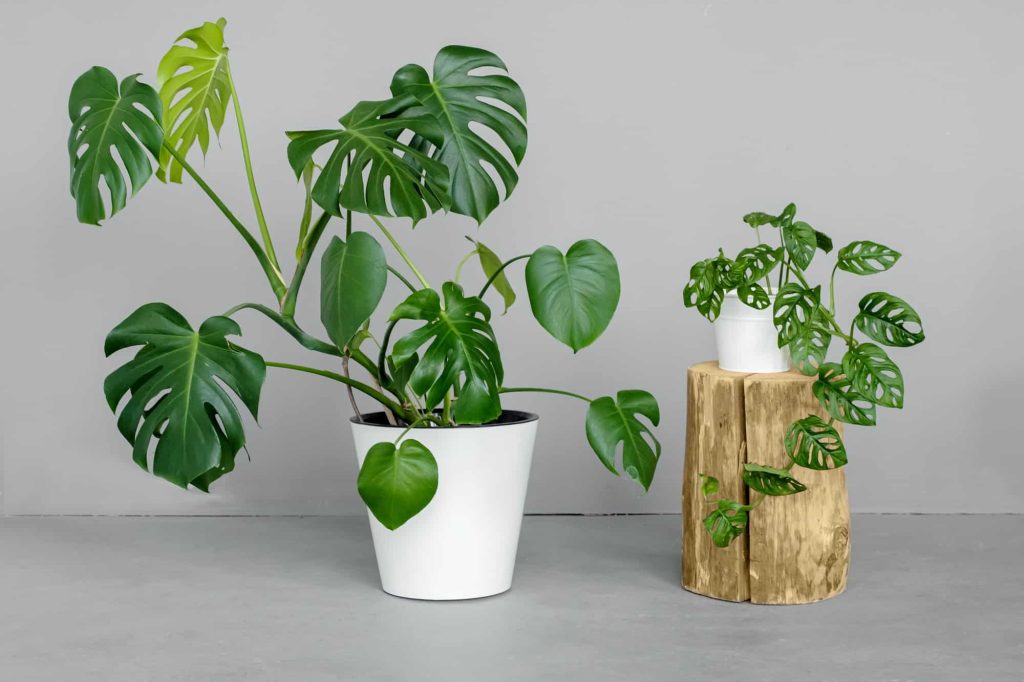The Swiss cheese plant is a popular easy-to-grow houseplant. Not just this, the plant is known for its unique and beautiful foliage.
We are aware that it is a personal favorite, especially for interior designers in every space.
Although this plant is easily seen around, we bet there are many things you do not know about your favorite swiss cheese plant and we have brought as much information as you may require, including the swiss cheese plant varieties, how to propagate, and the proper care guide.
Let’s dive in with a brief section about this plant so we can fully understand its needs.
Swiss Cheese Plant Explained
| Common name | Swiss cheese plant, ceriman, split-lead philodendron. |
| Botanical name | Monstera. |
| Plant type | Climbing evergreen. |
| Soil type | Quality potting mix. |
| Soil pH | 5.5. to 7.0. |
| Light | Bright, indirect light. |
| Water | Moderately watered. |
| Temperature | 6.0 to 7.5. |
| Toxicity | Toxic. |
| Origin | Central and South America. |
The swiss cheese plant is known by many other names, the first on the list is its botanical name monstera deliciosa, then fruit salad plant, Mexican breadfruit, ceriman, and the split-leaf philodendron. Just as you must have guessed, the plant got its name from its split and long-holed leaves that resemble the cheese.
The monstera plants originate from central and south America and there are more than 20 species of the monstera. The name monstera was coined from a Latin word that translates to “monstrous” or “abnormal”, while the second part of the name deliciosa means “delicious” and this is an indication that the plant can produce fruits.
However, your monstera deliciosa grown indoors will not produce fruits because that is not the tropical region.
With the right care, the Monstera deliciosa can grow up to 20m. We admit that the monstera deliciosa is easy to grow, however, like many other plants, it needs to be provided the right care to grow to its right potential. This guide will provide you with the right information you need to grow your monstera deliciosa.
Swiss Cheese Plant Varieties
There are over 20 varieties of the Swiss cheese plant some even claim there are up to 48 species. However, some species are hard to find in a local nursery. We have included the species that can be easily found in your local nursery or online. Here are the most common types of monster deliciosa you can get today/
1. Monstera Borsigniana
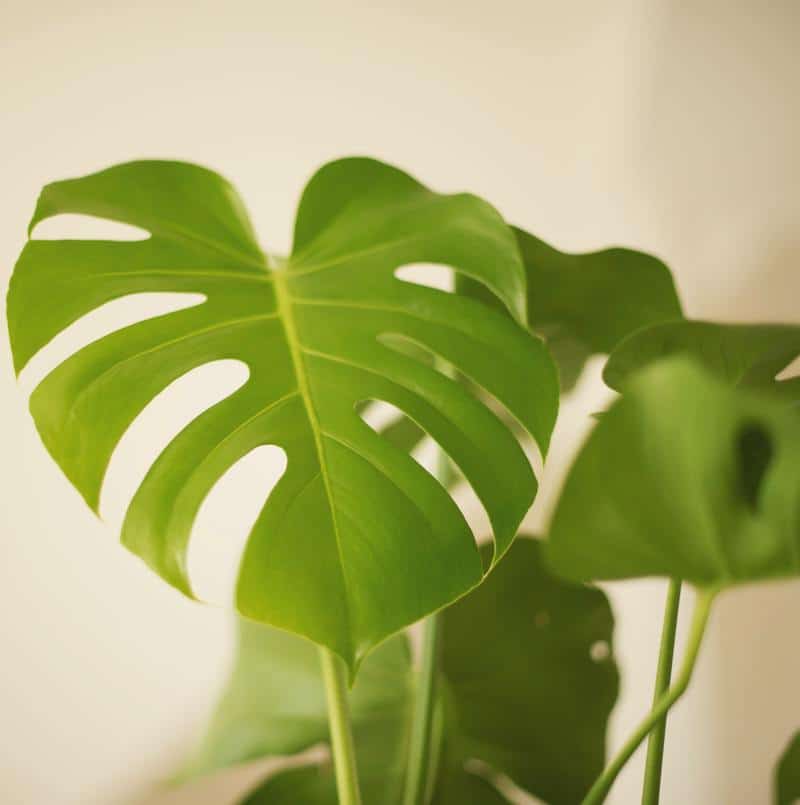
This species is sometimes identified and sold as deliciosa. You might have to look harder at your plant so you do not buy another deliciosa (if you have purchased one before) this plant is small and as it develops, it forms a neat row of slits.
2. Monstera Adansonii
The most noticeable thing about the adansonii species is its large holes. Although the plant is small than some other species, it has larger holes, that take up to 50% of its entire leaf. They have rough and thick leaves. The monstera adansonni is an easy-to-find species. Be careful when you want to purchase this species and it is sometimes mislabeled for monstera obliqua, which is a very rare species.
3. Monstera Variegata
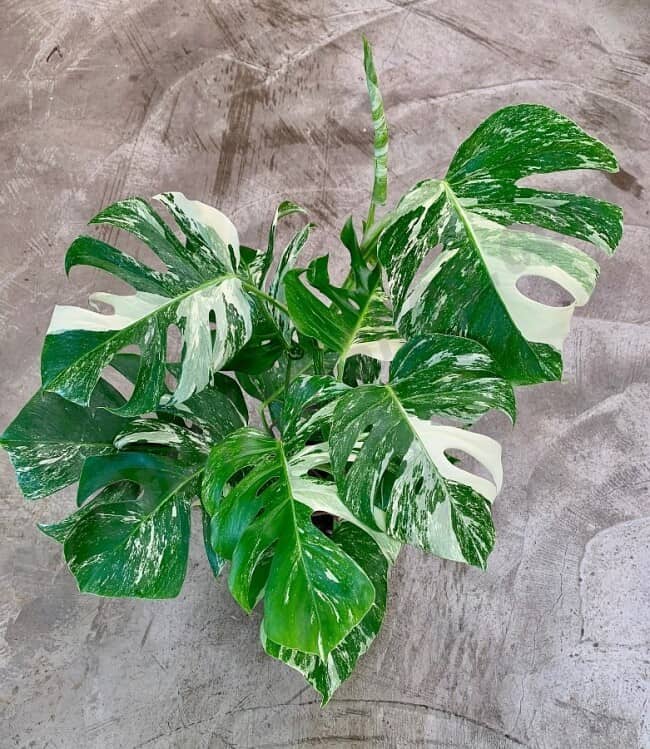
This is the variegated version of the monstera, they sometimes look unreal! They are patterned with white or cream color and green. They are not the easiest to find, and this has made them expensive. This variegated version is the perfect one you need to beautify your space.
4. Monstera Dubia
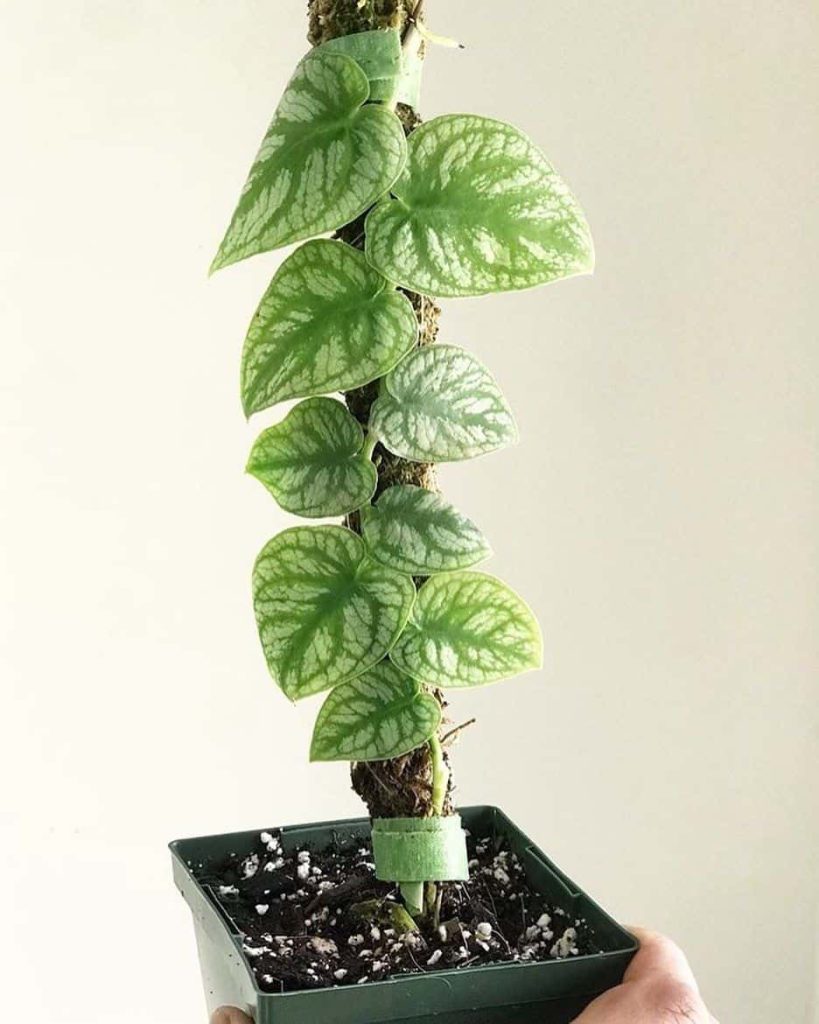
This is also known as the shingle plant. The dubia variety is a small plant, in heart shape, it is patterned in dark and light green veins. The plant has short stems and they grow like a vine. You will find them growing up close to whatever it is they are planted next to.
5. Monstera Thai Collection
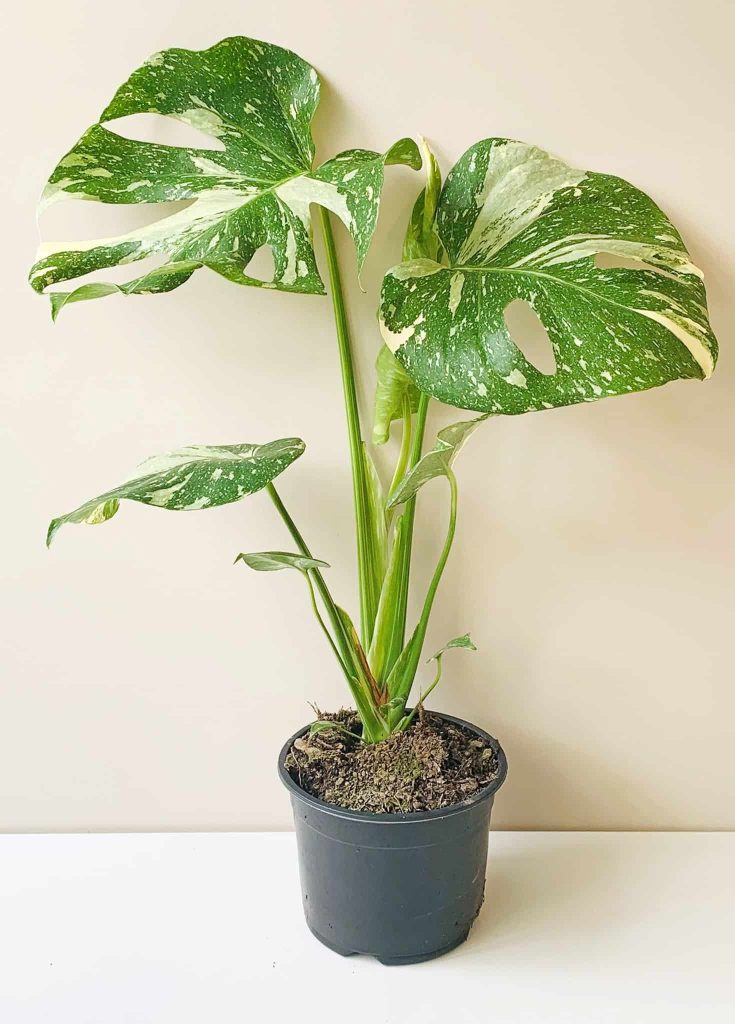
This is one low-maintenance monster that we love. The plant is known to produce attractive variegated leaves, with splashes of creamy-yellow coloring. This species is named after the lab in Thailand that created it.
6. Monstera Pinnatipartite
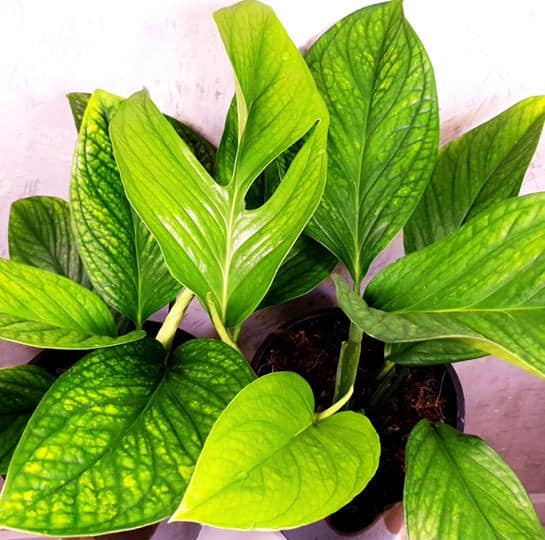
Do you love vining plants? This species is for you! they are known for their large, glossy emerald green leaves. Although the plant grows slits on the edge of the leaf, instead of holes. It may be hard to find this variety in your local nursery, however, we are sure you can find one or more online.
7. Mini Monstera

The mini monstera isn’t a monstera, however, it has many features of the monstera, and it is popularly known as mini monstera. The plant resembles a smaller version of the monstera plants. It has holed to the edge of the leaf; it comes in deep stunning green and it is a low maintenance plant.
8. Monstera Siltepecana
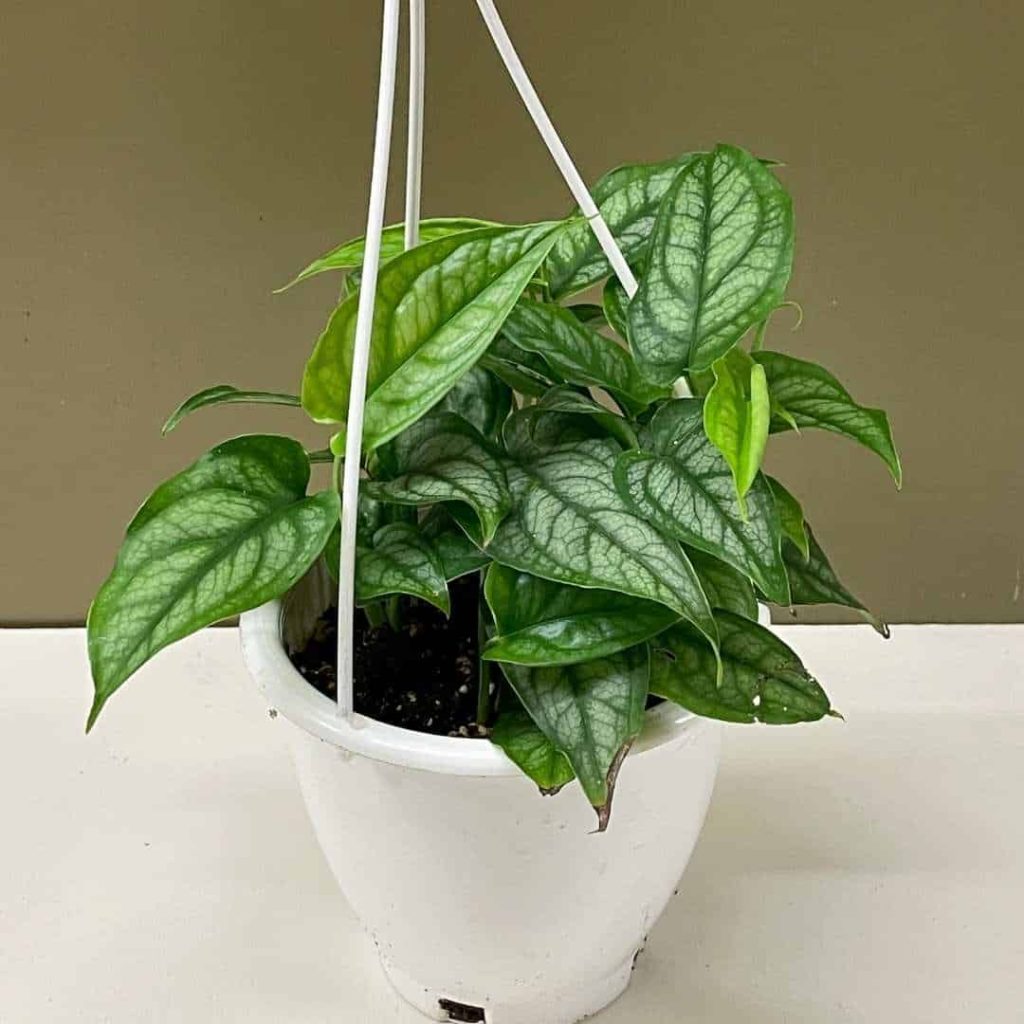
The siltepecana species is lighter than other species of the Swiss cheese plant, however, it contains both dark and light green hues. The plant does not develop holes until it is matured.
9. Monstera Deliciosa
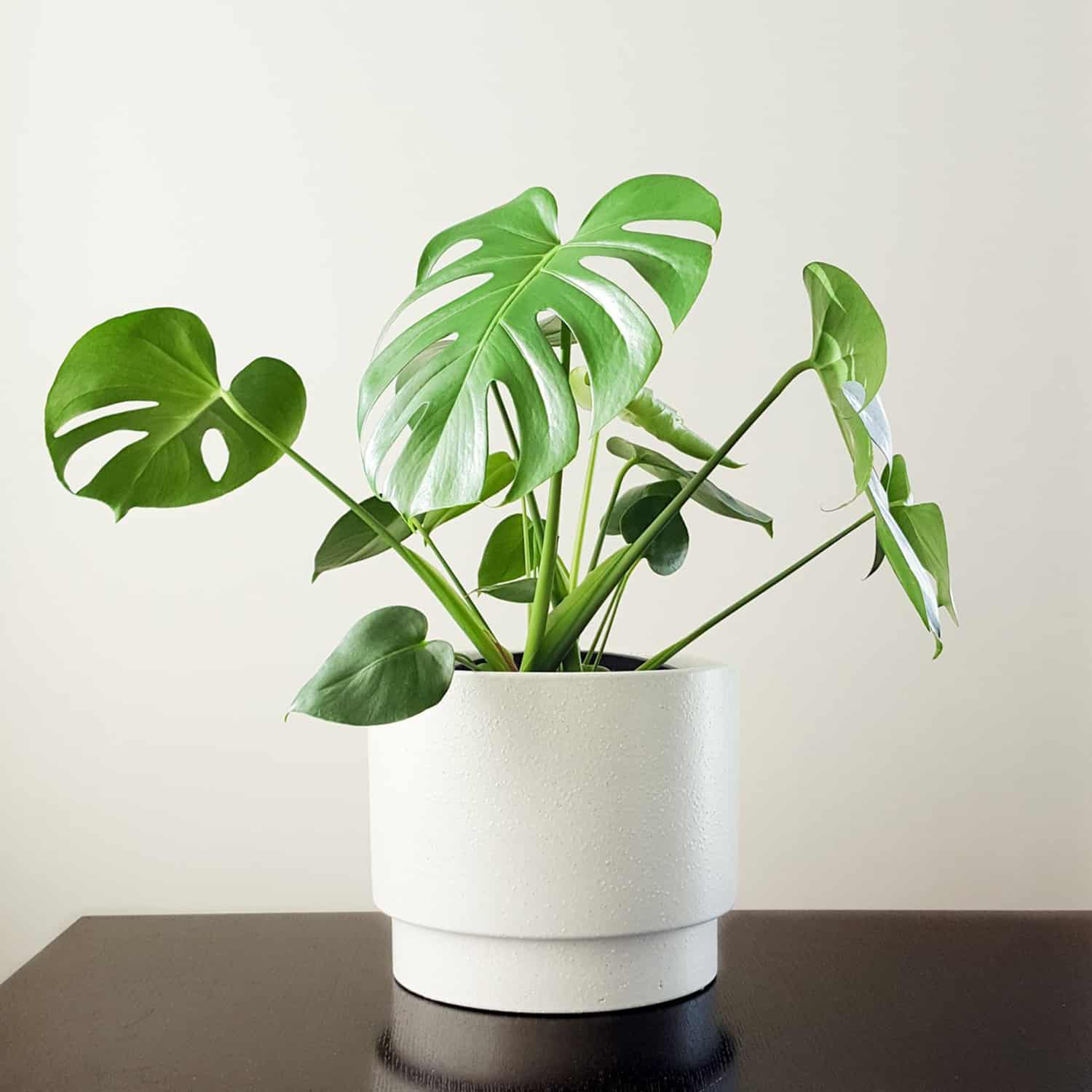
This is the most common species of the Swiss cheese plant; this is also the most sold everywhere you turn to. It is characterized by its big, gorgeous hoes. It is also known to produce fruits in its natural habitat. We can attest to it that the monstera deliciosa is an easy plant to grow.
Swiss Cheese Plant Propagation
Propagation allows you to create more of your plants. We have discovered that a lot of people who own a plant tend to want to propagate it to keep it living for a long time. Propagating swiss cheese is an easy task to perform. The plant is best propagated via stem cutting, which requires no special treatment, however, it has to be provided with the right conditions.
Follow the guide below to properly propagate your swiss cheese plant.
- Identify a healthy and mature plant and water it a day before you propagate.
- Prepare the pots in which your cuttings will be placed and fill them with potting mix, ideal for the swiss cheese plant. You could also get a mixture of one-half coarse sand and one-half peat. Water the mix thoroughly and let the water drain for a maximum of 30 minutes.
- Make a cutting from the mother plant you previously watered. Make sure your cutting was connected to the main stem. The cutting should be about 2 to 5 inches and must be free from any damages or infection.
- Dip the end of your cutting into rooting hormone or with the use of a cotton bud, apply some rooting powder on it.
- Make a hole in the moist soil and dip your cutting into the soil, use your hands to press the soil against the plant so it stays firm.
- Cover the pot with a big, clear plastic bag. Make sure the bag does not rest on the cutting, ensure the plant is properly covering your plant too.
- Place the plant in a warm spot, indoor or outdoor. Ensure it receives a maximum of 8 hours of bright, indirect light. It must be shielded from direct sunlight. Mist it every few days to retain moisture.
- In four to five weeks, your Swiss cheese cutting should develop its rotting system. You can confirm this by gently pulling on the base of the cutting, if there is a resistance, then your plant has its root. Remove the plastic bag and regularly mist the plant.
- Move your Swiss cheese plant to a permanent pot with a high-quality potting mix after two weeks and place your plant in bright, indirect light.
Swiss Cheese Plant Care
The best form of care guide is one that models the plant’s natural habitat. The monstera is a tropical plant, hence we have provided the right care guide that models the plant’s natural home.
1. Light
To keep your plant healthy and living, you need to provide it with adequate light. The swiss cheese will grow best in bright, indirect light, or partial shade. In their natural habitat, they are usually seen under large trees where they will be protected from direct contact with the sun. For healthy growth, the swiss cheese should not be exposed to direct sunlight. If this is unavoidable, they can be exposed for only a limited time i.e., two to three hours of the morning sun.
2. Soil
For best care, grow your swiss cheese in peat-based potting soil. This will help the soil drain water properly, yet retain moisture for the plant. It is also best to grow your swiss cheese plant in soil pH between 5.5 to 7.0.
3. Humidity
As a tropical plant that the swiss cheese is, it is only normal that it enjoys high humidity. This makes the monstera plant perfect for greenhouses. Identify a spot in your home where humidity is high i.e., your bathroom or kitchen. You can also choose to mist your plant regularly or purchase a humidifier to maintain the humidity your plant requires.
4. Temperature
Due to its origin, almost everything provided for your swiss cheese has to be high, yet balanced. The temperature at which your plant wants to grow in is not an exception. The swiss cheese will grow healthily in temperature between 60 to 75 degrees F.
5. Fertilizer
Your swiss cheese may not require being fertilized, however, if the need arises, make use of a liquid fertilizer every few weeks, especially during the growing seasons. Ensure not to fertilize immediately you plant or repot, wait a couple of months. You must dilute the liquid fertilizer before applying it to your plant.
6. Water
The swiss cheese plant enjoys being kept moist, however, they do not like being waterlogged. We understand that this may look difficult to achieve, this is why we recommend you create a watering schedule or you do a little test before watering. Simply dip your finger into the soil, only an inch deep. If it feels dry, then your soil needs to be watered. You can create a watering schedule by observing the interval between this need. Your plant will be thankful!
Swiss Cheese Plant FAQs
Can Swiss Cheese Live Underwater?
Yes, the swiss cheese plant can adapt to any condition of living, including water, and it can do so for a very long time! However, your swiss cheese may not be as healthy as it can be in the water. It may also not grow as large as it should be or as high as it can be in the soil.
How Do You Make A Monstera Bushier?
Pruning can make your plant bushier. Pruning should be done when your plant is becoming wild. It is also best done in spring. Get rid of leggy growth, dead or damaged leaves. This will encourage more growth and keep your plant looking nice. You can also propagate it by stem cutting.
Does Monstera Grow Fast?
Yes! your monstera deliciosa will grow fast when provided the right care condition. The monstera is expected to grow to about 1 to 2 feet per year and as your plant gets bigger, it produces new leaves in 4 to 6 weeks. The reduction of the increase in your plant’s growth is highly dependent on environmental and care conditions.
What Causes Curling Swiss Cheese Plant?
A lot of factors can contribute to your swiss cheese curling. The most notable one is under-watering. This can be solved by giving your plant a “bath”, do this by taking your plant out of its pot, place it in the bathtub or outside, give it plenty of water and let it drain properly before you return to the pot. This can also be a sign of an infestation of pests. It is recommended that you investigate and observe your plant before you determine the cause of the problem. Look out for other signs like dry soil, brown leaf tips yellow rings on leaves, etc.
How Do You Revive A Dying Monstera Deliciosa?
It is a normal occurrence for your swiss cheese plant to be without holes, especially at an early stage. The leaves of the monstera begin to split as they mature, you should exercise patience with it. If your plant is mature and does not have holes, this is an indication that your plant might be suffering from poor lighting, underwatering, and under-feeding. Give your plant access to bright, indirect light and water it properly.
Why Does My Swiss Cheese Plant Have No Holes?
It is a normal occurrence for your swiss cheese plant to be without holes, especially at an early stage. The leaves of the monstera begin to split as they mature, you should exercise patience with it. If your plant is mature and does not have holes, this is an indication that your plant might be suffering from poor lighting, underwatering, and under-feeding. Give your plant access to bright, indirect light and water it properly.
Are Monstera Deliciosa Toxic To Dogs?
Yes! Swiss cheese plant is highly toxic to animals and humans. This can be attributed to the insoluble calcium oxalates which the plant contains.
How Often Does Monstera Grow New Leaves?
Your swiss cheese plant will grow new leaves in 4 to 6 weeks. However, this is dependent on the care provided for your plant. This includes adequate light, water, good soil.
How Much Light Does The Swiss Cheese Plant Need?
Swiss cheese plant only requires bright, indirect light. Exposure to direct light will scorch your plant and cause damages.
How Do You Revive A Dying Monstera Deliciosa?
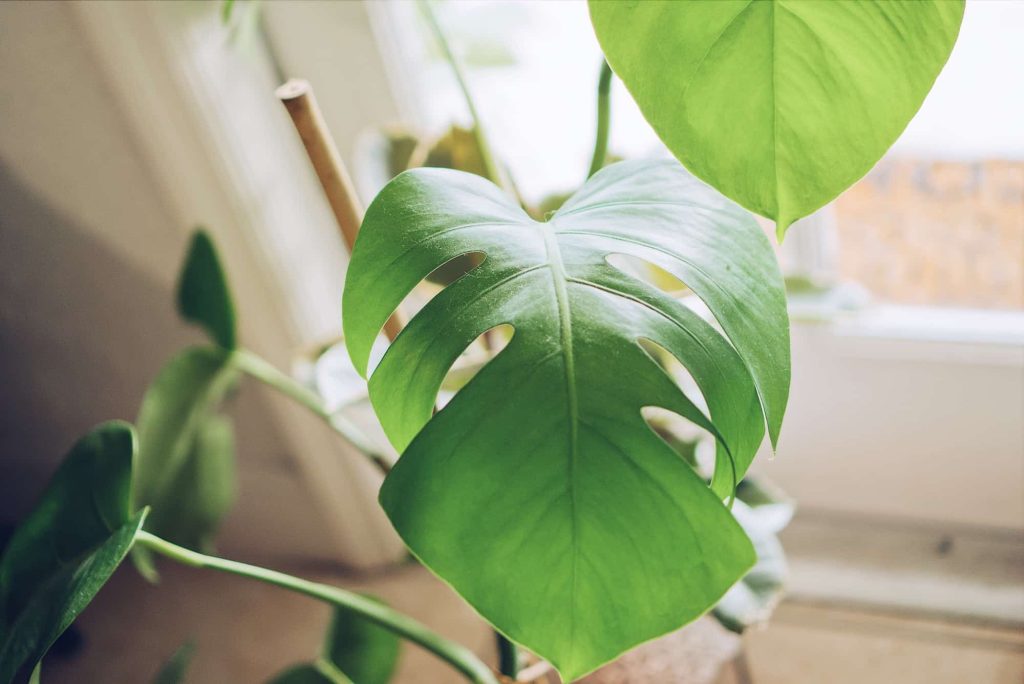
In case you find your swiss cheese dying, here are few ways to revive it and get it to normal health.
- Check the humidity level and provide adequate humidity as lack of humidity can lead to the death of your plant. Make sure your home isn’t too dry for your plant. Observe during winter when the heat in the home is usually on.
- Your plant’s death could be a result of an infestation of pests. i.e., spider mites, scales, etc. If you find this to be the reason, get your plant out of its pot and shower it, change the soil and get insecticides to get rid of the problem. In cases of taking your plant out of its pot, be careful so you do not damage your plant’s root.
- Underwatering is a major cause of swiss cheese’s death. If this is determined as the cause, shower your plant, let it drain, and return it into its pot. Water your plant continuously for a minimum of two weeks and return to the regular care routine.
Final Thoughts
The Swiss cheese plant is the perfect plant for your home and office. It is easy to grow, as long as you provide it with the necessary care that it needs. The following tips have been provided for your plant’s proper care.
- You might find your swiss cheese plant disturbed by pests, however, this can be taken care of by washing the leaves with insecticidal soap. You can also get rid of dust with the use of a damp sponge or towel.
- Pruning is very essential to your plant’s growth. Prune them regularly if they become leggy or you identify dead or damaged parts.
- They can be grown as outdoor plants too, however, if the soil in your location is salty, you should move them indoors.
- Fertilization is recommended at most 4 times a year.
We are certain that your plant will grow to its best, once this care guide is provided.

